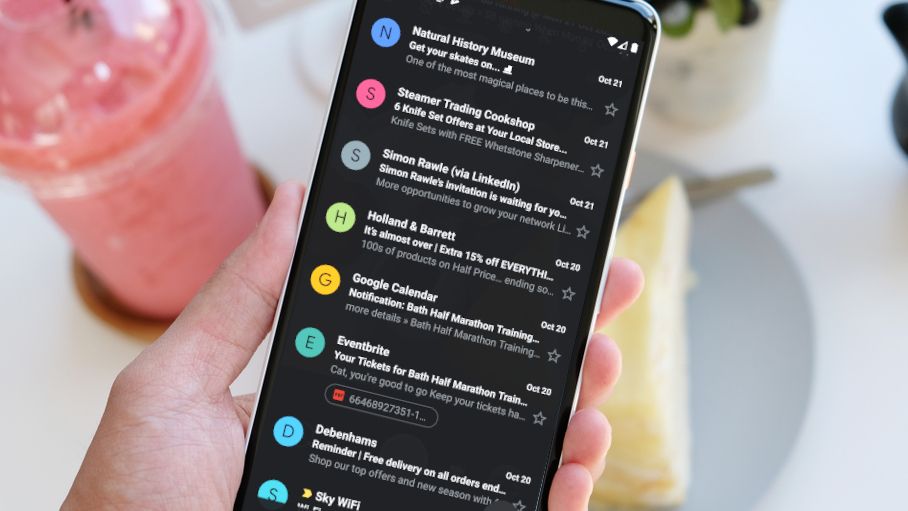Tech
The Apple Watch Series 10 Proves the iPhone Needs This Feature

I’m sitting at my desk at around 11 a.m., and the battery in my Apple Watch Series 10 is down to 38%. That’s after I wore the watch for a full day, slept with it on overnight, recorded a 37-minute workout earlier this morning and threw it on its charger for 20 minutes as I got ready to leave the house.
Though 38% will probably last longer than I expect, I’m still worried about whether the battery will make it through my busy day. And it’s for this reason that I wish the iPhone supported reverse wireless charging for replenishing the Apple Watch’s battery. The feature, which is exactly what it sounds like, allows you to power up other devices like smartwatches and earbuds by resting them on the back of your phone. It essentially turns your phone into a wireless charging pad, and it’s been available across many Android devices for years.
However, puzzlingly enough, top Android watches like the Google Pixel Watch 3 and the Samsung Galaxy Watch 7 also can’t be charged via reverse wireless charging, despite the fact that their companion phones support the feature. Finding an easier way to charge smartwatches on-the-go is clearly a problem that extends beyond Apple. But it’s the Apple Watch’s emphasis on sleep that made me realize just how useful this option could be.
For most people, the Apple Watch’s 18-hour estimated battery life is likely just fine. And Apple does have the $799 Apple Watch Ultra 2, which lasts twice as long (but also costs twice as much as the base Series 10). At a time when sleep tracking is becoming a bigger priority, though, I want Apple to think more carefully not just about how long it takes to charge your Apple Watch, but how you charge it. If the non-Ultra Apple Watch can’t achieve multiday battery life, it’s time for Apple to come up with a more convenient way to power up the Apple Watch when you aren’t near an outlet or charger.
Read more: Why Oura’s CEO Isn’t Worried About Samsung’s Galaxy Ring
The Apple Watch makes a strong case for reverse wireless charging
Don’t get me wrong. I appreciate that Apple has improved the Apple Watch’s charging speed over the years. The Apple Watch Series 10, for example, can refill its battery from zero to 80% in 30 minutes, while it takes the Series 9 45 minutes to do so. This, combined with Low Power Mode, certainly make the Apple Watch’s 18-hour battery life easier to swallow.
Still, for the Apple Watch to be a device that’s truly with you all the time, it needs a better way to charge on the go. Samsung certainly has some ideas in that department. For instance, one of my favorite things about Samsung’s Galaxy Ring is the handy transparent charging case it comes with, so you can charge up the ring anywhere.
But adding reverse wireless charging to the iPhone would present a more frictionless way to achieve this without requiring a new accessory.
Yes, it would likely put more strain on your iPhone’s battery. But hear me out — there are certain situations where that might actually be fine. At my office, for example, I have plenty of USB-C cables for charging my iPhone and other gadgets, but I keep forgetting to leave an Apple Watch charger in my desk drawer. Using my iPhone to charge my Apple Watch at work would be no big deal, since I can easily plug in my iPhone before leaving for the day.
The same can be said when I’m at the home of a friend or family member. Not everyone has an Apple Watch, but they certainly have a USB-C cable to charge their phone and other common gadgets like laptops and tablets.
In the past, I’ve been content with leaving my watch on its charger overnight. But Apple, and other makers of wearable devices, have given me more reason to track my sleep over the past year. Other than the ability to detect potential signs of sleep apnea, sleep is increasingly being factored into broader, more holistic health metrics.
On the Apple Watch, that’s come to fruition through the Vitals app in WatchOS 11, which measures key metrics like heart rate, respiratory rate and wrist temperature overnight to let you know if any of those data points are out of range. Samsung also launched its Energy Score this year for its wearables, which evaluates your physical and mental state by crunching metrics such as sleep, activity and heart rate.
Apple’s iPhones may not have reverse wireless charging, but they do have a slightly different feature. You can plug your Apple Watch’s charging cable into the iPhone 15 or later to charge it, and the same goes for AirPods. While this is helpful if you happen to have a charging cable on you but aren’t near an outlet, it doesn’t do any good if you forget your charger in the first place.
You can also charge Apple’s MagSafe Battery Pack accessory, which Apple removed from its store last year, and your iPhone at the same time when the pack is attached to your phone while it’s plugged in. That’s potentially hinting the technology is there, should Apple enable it.
Read more: How Google Wants to Make Android Smartwatches Last Longer
It’s not just an Apple problem
The Apple Watch isn’t alone; flagship smartwatches from companies like Samsung and Google also last less than two days on a charge. That’s to say, relatively short battery life on smartwatches isn’t an Apple-specific issue.
And while phones like the Samsung Galaxy S24 and Google Pixel 9 let you rest accessories like smartwatches and earbuds on the back of the device to charge them, that tech won’t come in handy if you have the latest smartwatches from either company.
Google’s support website says the Pixel Watch can only be charged with the supplied charger, although the Pixel Watch 2 and 3 are also compatible with certain Fitbit chargers. It also specifically says that reverse wireless charging from Pixel phones isn’t supported.
Samsung’s website similarly indicates that only certain Galaxy Watches and other wearables support its PowerShare feature, and recent watches like the Galaxy Watch 7 aren’t among them.
Clearly, tech giants have yet to find a way to make it so that we can charge our watches whenever we want and wherever we are. That may be fine right now, but as sleep monitoring becomes a larger part of the value proposition behind these devices, the more demand there will be for a mobile charging mechanism.
I’m hoping that as Apple further develops its ecosystem of MagSafe charging accessories and the Apple Watch’s design, there will be a future in which I can easily charge my watch when I’m not near an outlet. The same can be said for future Google Pixel and Samsung Galaxy accessories, too.
For now, I’ll just try to remember to pack that round silver-and-white charging puck.




.jpg?width=1200&height=630&fit=crop&enable=upscale&auto=webp)




